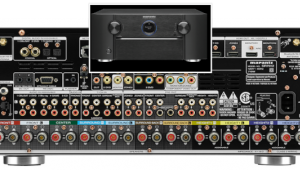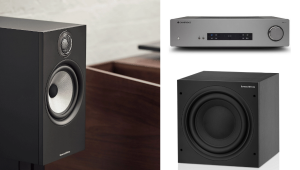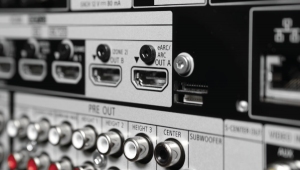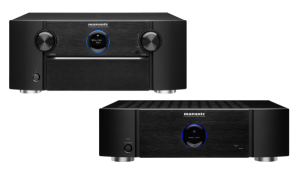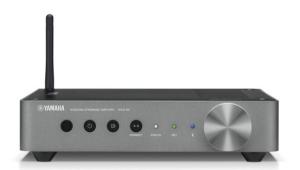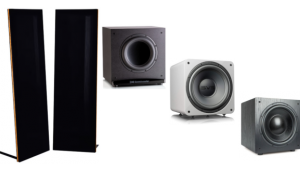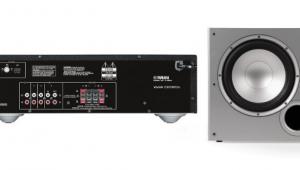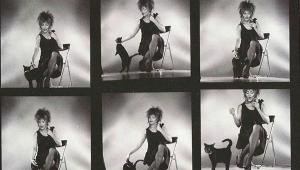Calibration Training, AVR Connections, Frame Rates

In looking for a good part-time job (hopefully working into full time), I ran into a guy who advised that I take a video-calibration technician course. Who is best to teach this? I heard that an ISF course is available through a school in Colorado. I have also heard you and Leo Laporte chat about THX in glowing tones, and I see online they hold courses in Las Vegas and Dallas.
At this point, I'm as green as the grass, but I do have the interest. So where would you suggest I start? How much should I expect to pay, and how long is the training required? Do I need any additional background before attempting a calibration course?
Rich Ireland
Both THX and ISF offer video-calibration courses, and both are excellent. However, I've often likened them to drinking from a fire hosethe amount of information imparted in three days is staggering. Thus, I wouldn't recommend them for anyone who is "green as the grass."
Before taking either one, you need some grounding in video basics. Start by reading as much as you can find on the subject here on HomeTheaterMag.com and elsewhere online. In particular, read our TV reviews, and pay special attention to the Measurements section of each one, which talks about the technical aspects of setting up and measuring the set's video performance.
To get some practical experience, optimize the basic picture controls on as many TVs as you canyours, your family's, your friends', etc. To do this, you need a good setup disc, such as High-Definition Benchmark on Blu-ray, which also includes some tutorial information, or Digital Video Essentials or Avia on DVD, though both of those are somewhat more complicated. You can also use any THX-certified DVD, which includes a section called THX Optimizer. Be sure to read my detailed description of the entire procedure here.
Otherwise, see if a local community college offers classes on video calibration, which will probably be longer and less intense than the THX and ISF courses. Perhaps you can hire a local calibrator to give you some private lessons, or maybe you can intern with him, doing some grunt work in exchange for watching him do calibrations.
As for cost, the THX Video 1 and 2 courses (three days total) are $1995, while ISF Level 1 and 2 (also three days total) are $1800. Neither set of courses is offered in a fixed location as far as I know; check the THX and ISF websites for their training locations and schedules. Then there's the cost of the equipment you'll need to do full calibrations, which can range from a couple of thousand to tens of thousands of dollars. (You don't need any of this equipment to do basic setup as discussed above.) It's expensive to become a full-fledged video calibrator, but I find it very rewarding to help people get the most out of their TVs.
The Best Connection
I can't see why I'd want to connect a source device's video output to my A/V receiver. The audio is a no brainer, but as an old IT guy, I was always taught that the best connection is a direct connection. So cabling the video to my A/V receiver makes no sense to me since it adds an unneeded device to the configuration. Also, I can't see how any A/V receiver would enhance the picture quality.
Steve Soricelli
Your concern is valid, but not because of any inherent problem in passing a video signal through another device. Many AVRs pass video signals without any degradation at all, but some do degrade the picture quality because the internal processor is poorly implemented. In particular, some AVRs clip "above white" and "below black," which is a deal breaker in my book.
I wouldn't say that an AVR can significantly enhance the picture quality, though many modern models can upconvert standard def to high def. Whether or not the AVR does a better job of this than the player or display is another question, but if another device does a better job, the AVR's video processor can often be bypassed.
How do you know if an AVR degrades the video or processes video poorly? Read our reviews, which include a section that tests these functions explicitly.
Assuming that an AVR doesn't do anything untoward, the main reason to pass the video through it is convenience. An AVR is designed to be a central switcher for both audio and video, and it's a lot easier to select what you want to watch and listen to from one device rather than having to switch the AVR for audio and the TV for video. Granted, your universal remote can do that for you, but if it's not pointed in the right direction, one or the other device might miss the command, leading to much gnashing of teeth.
Update: As Dave Anderson points out in the comments below, HDMI connections carry both audio and video in one cable, so you have no choice but to send audio and video to the AVR in that case, unless the source device has two HDMI outputs. And other than using multiple analog cables, HDMI is the only way to get the highest-quality audio into the AVR, which is a good reason to choose this approach.
It's So Refreshing
If television signals in the US are either 30fps (okay, 29.97fps) or 24fps in the case of Blu-ray movies, why the fixation on flat-panel refresh rates? I understand that 3D needs 240Hz to essentially interleave the left and right perspectives in an otherwise "normal" 120Hz display, but what's the science and/or math behind needing to display a frame four times in 1/30th of a second (120Hz display rate / 30fps)?
David Shorrosh
First of all, while it is technically correct that US broadcast TV can be characterized as 30fps (frames per second), it is more accurate to say it is sent at a rate of 60 interlaced fields per second, and when the TV deinterlaces that signal, the result is 60 frames per second. Why isn't the result 30 frames per second? There are several reasons that are too complicated to get into here.
Now, on to your question. The high frame rates to which you refer apply only to LCD-based flat panels, not plasmas. These high rates are designed to address the problem of motion blur in LCD TVs, and they are accompanied by a process called frame interpolation. Between each consecutive pair of deinterlaced frames, the TV creates new frames in which moving objects are placed where they would be if the camera had caught them at the higher frame rate to begin with.
With an interlaced input, a 120Hz TV creates one new frame between each pair of deinterlaced frames, while a 240Hz TV creates three new frames between each pair of deinterlaced frames. (Remember that there are 60 deinterlaced frames per second, not 30.) With a Blu-ray movie at 24p (24fps progressive), a 120Hz TV creates four new frames and a 240Hz set creates nine new frames between each pair of incoming frames.
Of course, nothing is free, and the process of frame interpolation causes its own problems. Primary among them is that it imparts a "video" look to movie content, to which many viewers object. Fortunately, frame interpolation can be disabled, but then each incoming frame is simply repeated as you note, which does nothing to improve motion blur. (In this case, each deinterlaced broadcast frame is displayed twice on a 120Hz set, not four times as you state.) Plasmas have no need for frame interpolation because their pixels respond to changes to brightness and color much faster than LCD pixels.
If you have a home-theater question, please send it to scott.wilkinson@sorc.com.
